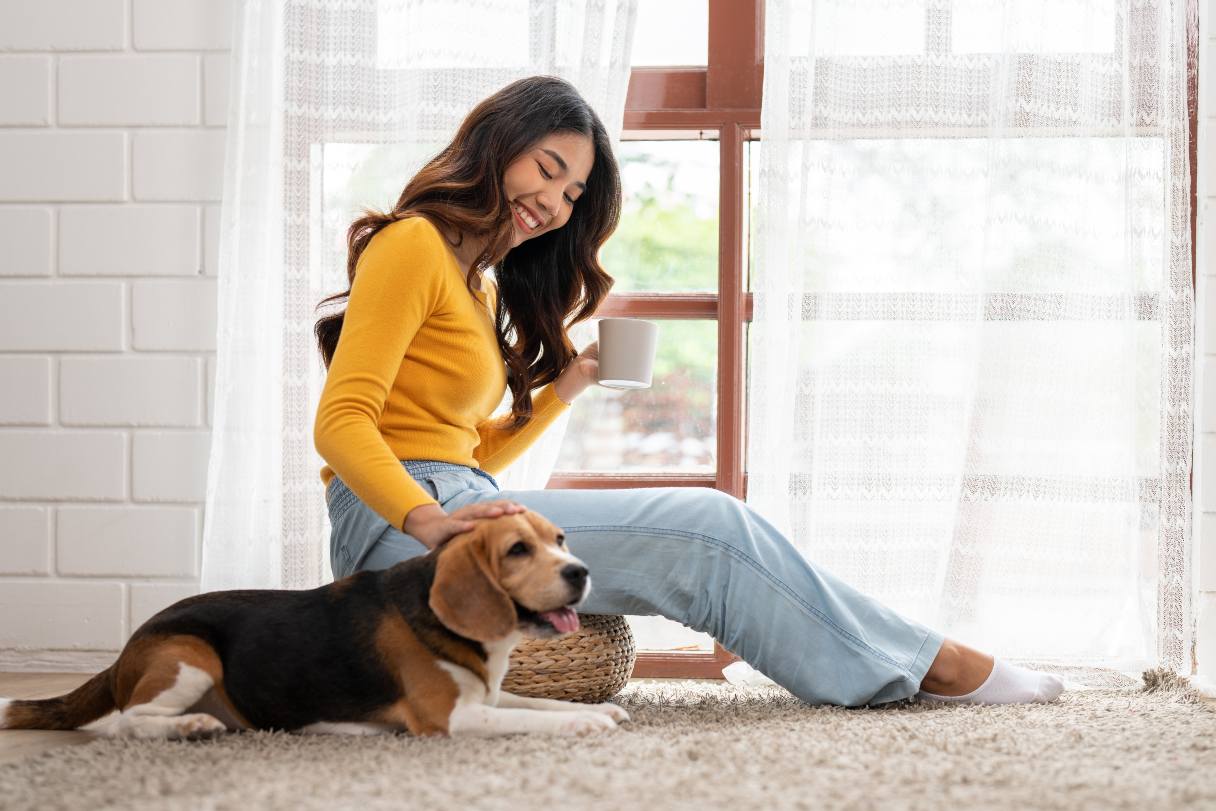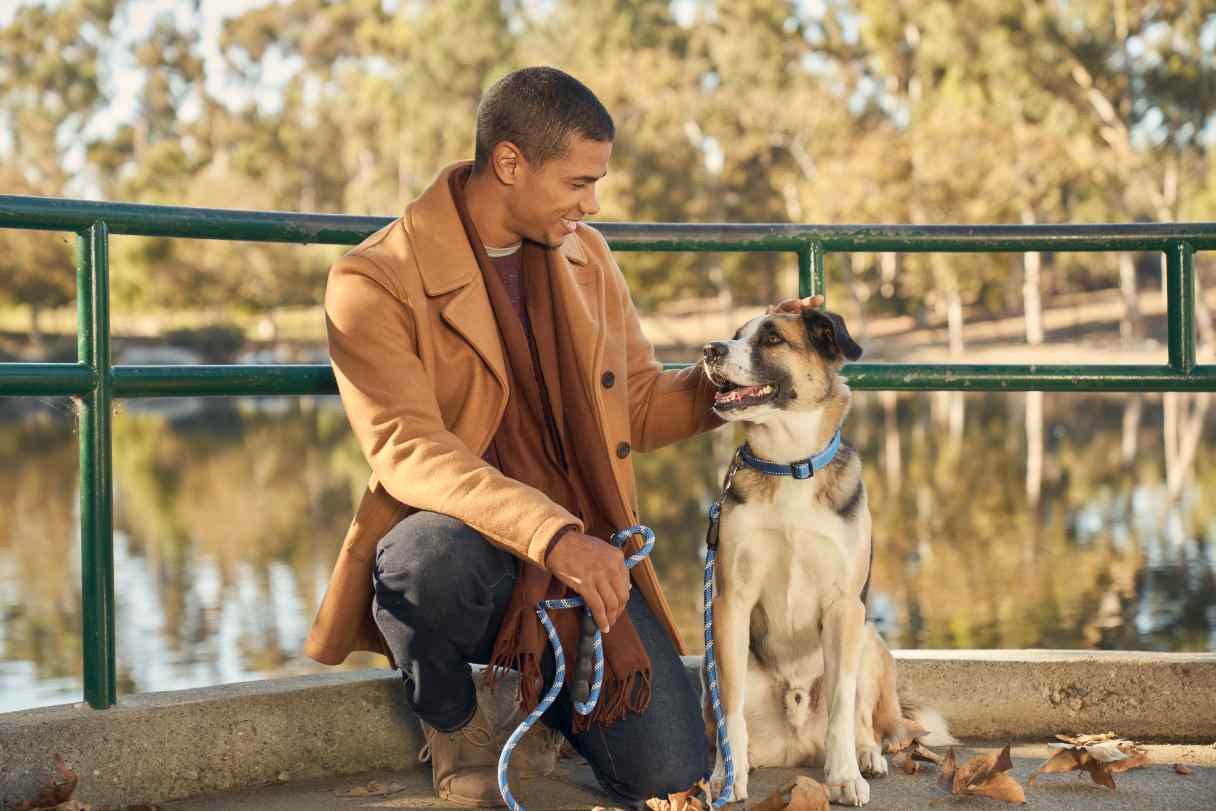Puppies are bundles of energy, and it's so much fun to watch them romp and play as they grow. But when your pup slows down and stops being their usual playful self, something is clearly wrong. That something could be a bone disease that can cause growing puppies and young dogs a great deal of pain: hypertrophic osteodystrophy, or HOD.
What Is Hypertrophic Osteodystrophy (HOD)?
Hypertrophic osteodystrophy (HOD) is a developmental disease that impacts the long bones in growing puppies and young dogs. It mainly affects large and giant breed puppies from 2 to 8 months of age, but it has also been seen in medium-sized dogs and in dogs as old as 15 months. It's mostly seen in male pups, although females can get it, too.1
HOD causes painful swelling and inflammation in the “neck" portion of the long bones, which is next to the joint.1 This part of the bone contains the growth plates.2 Growth plates stay soft and continue producing new bone tissue until the pup finishes growing.3 HOD most commonly affects the leg bones, although it has also been seen to affect the jawbone, ribs and other long bones.1
Causes of Hypertrophic Osteodystrophy in Dogs and Puppies
Symptoms of HOD are caused by decreased blood flow to the affected portion of the bone, which interferes with proper bone formation.2 No one knows what causes this to happen, although researchers have theorized several possible causes:1
- Genetics
- Canine distemper
- Autoimmune disorders
- Adverse reactions to certain vaccines
However, none of these theories have been proven to be the cause of HOD.1
Breeds Predisposed to Hypertrophic Osteodystrophy
All large breed dogs have a higher propensity for developing HOD due to their rapid growth. Weimaraners in particular appear to have a predisposition toward this condition and tend to be more severely affected than other breeds. Pit bulls and Australian cattle dogs, although considered medium-sized breeds, may also be prone to HOD.2
Signs and Symptoms of Hypertrophic Osteodystrophy
One of the most prominent signs of HOD is swelling in the bones that are warm to the touch,1 but this might not be obvious to pet parents. However, a puppy with HOD might be reluctant to get up and move around normally.2 Other signs of HOD to look out for include:1
- Fever
- Appetite loss
- Lethargy
- Weakness
- Refusal to walk
- Lameness
In severe cases of HOD, these additional symptoms might be present:1
- Abnormal-sounding respiration
- Eye or nose discharge
- Diarrhea
- Blood in the stool
- Skin bumps or pustules
- Vomiting
- Vaginitis in females
If you notice any of these symptoms or behaviors in your pup, you should have a veterinarian examine them right away.
Diagnosing Hypertrophic Osteodystrophy in Puppies and Dogs
Vets make an initial diagnosis of HOD based on a physical examination and the presence of associated signs and symptoms, followed by X-rays to confirm the diagnosis. Some symptoms, however, including lethargy, lameness and loss of appetite can appear up to three days before the condition can be seen by an x-ray.1
If your vet suspects your pup has HOD based on their symptoms, they'll most likely begin treatment and recommend following up with another X-ray in a couple of days to be certain.1
Hypertrophic Osteodystrophy Treatment and Costs
In mild cases, HOD tends to get better on its own without treatment. To aid healing and help your pup be comfortable, your vet may give them nonsteroidal anti-inflammatory drugs (NSAIDs) for pain, and recommend limiting their movement.1
Costs of prescription NSAIDs for dogs will vary based on brand, dosage and quantity, but carprofen, a generic version of a pet NSAID, starts at around $12.99 for a 30-day supply of 25-milligram caplets.4
Moderate cases in which the puppy experiences more severe lameness or other symptoms may be treated with steroidal medications if they don't respond well to NSAIDs. They may also be treated with antibiotics to head off possible secondary infections due to suppression of the immune system caused by the corticosteroids. Antacids might also be prescribed to help control stomach upset from the medications.1
Prices on medications will vary depending on the type, brand, dosage and quantity. Prednisolone, a generic corticosteroid medication for dogs that's commonly used in treatment of HOD, costs around $25 for a 15-milligram liquid oral solution.5 Amoxicillin starts at about 26 cents per capsule or tablet.6 And a 30-pack of famotidine tablets, an antacid for dogs, starts at about $3.50.7
Severe cases of HOD may require hospitalization so that medications can be administered via IV and the puppy can be closely monitored. Steroids will likely be given in place of NSAIDs, and puppies in severe pain might also be given opioid pain medication.1
Hypertrophic Osteodystrophy treatment costs
According to CareCredit's 2024 Average Procedural Cost study,* the average cost of hypertrophic osteodystrophy treatment in the U.S. is $824.8
You'll find the breakdown for average costs and cost ranges of diagnosing and treating HOD in the table below.8
| Procedure | Average cost | Cost range |
|---|---|---|
|
HOD treatment (includes X-rays) |
$824 |
$635 to $1,485 |
|
Hospitalization at a veterinary clinic (per night) |
$289 |
$222 to $567 |
| Hospitalization at an emergency clinic (per night) | $722 | $556 to $1,355 |
| Hospitalization at a veterinary hospital (per night) | $839 | $658 to $1,648 |
|
IV catheter (includes one bag of IV fluid) |
$75 |
$58 to $146 |
|
Additional IV fluids |
N/A |
$35 to $65 per bag |
Recovery From Hypertrophic Osteodystrophy
In the majority of cases, dogs and puppies with HOD get better either on their own or with treatment. In severe cases, secondary infections and malnutrition from not eating can lead to death, but this is rare. It's also possible that puppies with HOD may develop permanent bone deformities. These may be able to be corrected with surgery, but in the worst cases, quality of life considerations may lead some pet parents to consider euthanasia to spare their pups from a lifetime of pain.1
Preventing Hypertrophic Osteodystrophy in Puppies and Dogs
Without knowing the exact cause, it's difficult to prevent your puppy from developing HOD. But you can take steps to reduce the likelihood of them getting it:2
- Avoid giving large-breed puppies any supplements that will speed up their growth rate and increase their size.
- Feed your pup high-quality food that's formulated for large-breed puppies.
- Avoid having your puppy jump or run long distances or on hard surfaces until after their growth plates have closed.
- Use a puppy growth chart to help track your pup's growth rate so you can tell when they've finished growing.
- Provide soft surfaces for your puppy to lie on.
- Place rugs on hard floors to prevent your puppy from slipping and falling.
As mentioned earlier, Weimaraners are particularly prone to HOD. If you have a Weimaraner puppy, talk to your vet about a possible connection between the canine distemper vaccine and HOD.9 They may be able to advise you on what action(s) you can take to protect your pup, or ways you might lessen the chance of an adverse reaction.
Financing HOD Treatment With the CareCredit Credit Card
Your dog is your best friend, and you want to make sure they get the very best. That's why the CareCredit credit card is here to help you manage the costs of diagnostics and treatment for conditions like hypertrophic osteodystrophy.** Use our Acceptance Locator to find a veterinarian near you that accepts CareCredit. CareCredit is there for you and your pet every step of the way; continue your wellness journey by downloading the CareCredit Mobile App to manage your account, find a provider on the go and easily access the Well U blog for more great articles, podcasts and videos.
In addition to pet care, you can also use your CareCredit credit card for dentistry, cosmetic, vision, hearing, health systems, dermatology, pharmacy purchases, spa treatments and so much more within the CareCredit network. How will you invest in your health and wellness next?
Author Bio
Jean Marie Bauhaus is a freelance writer and novelist who has been writing pet content since 2013. Her work has appeared on Forbes.com, Hill's Pet, Chewy, AKC.org and more.







